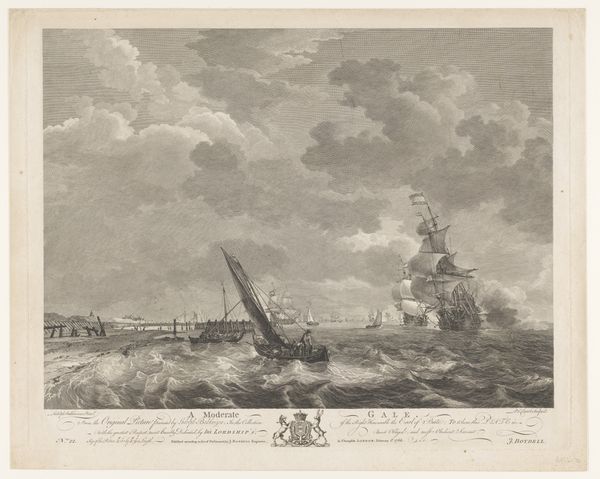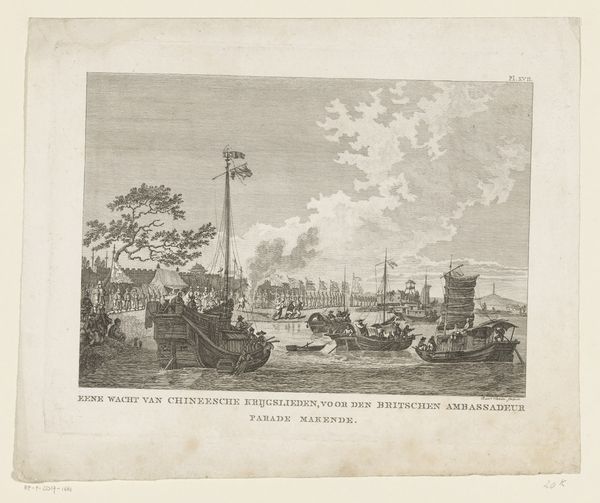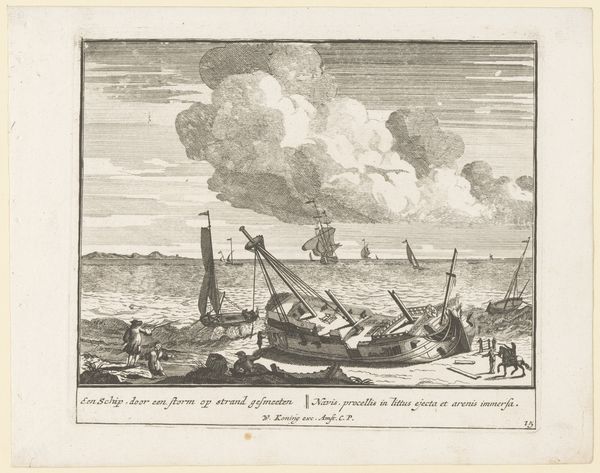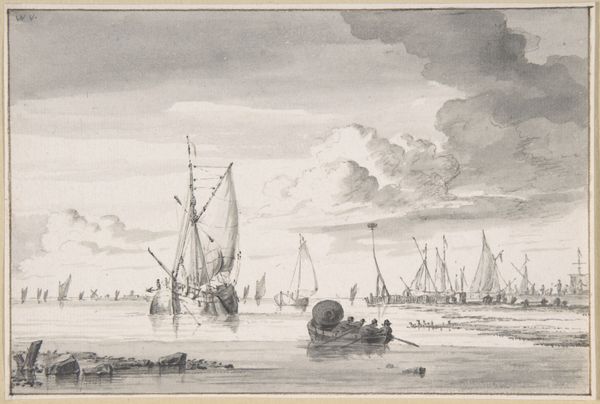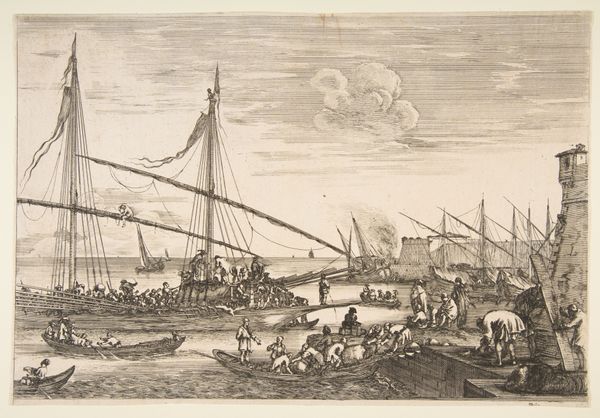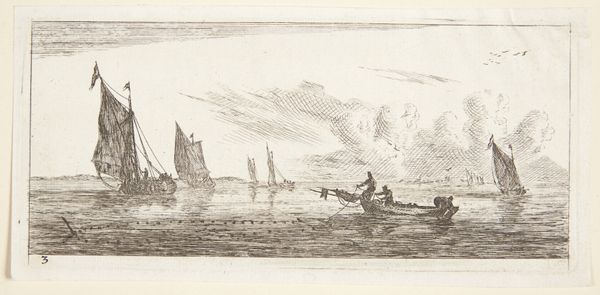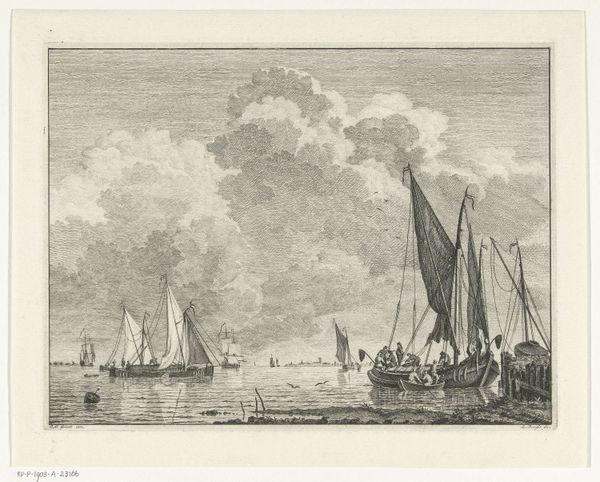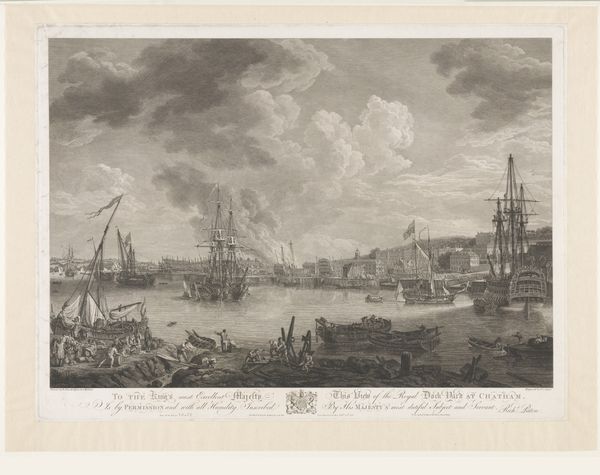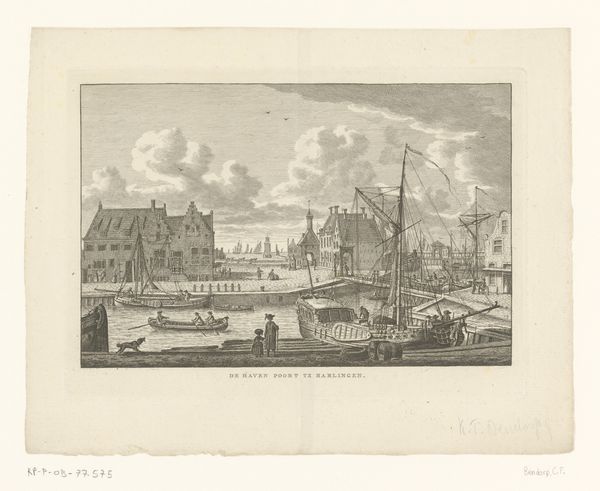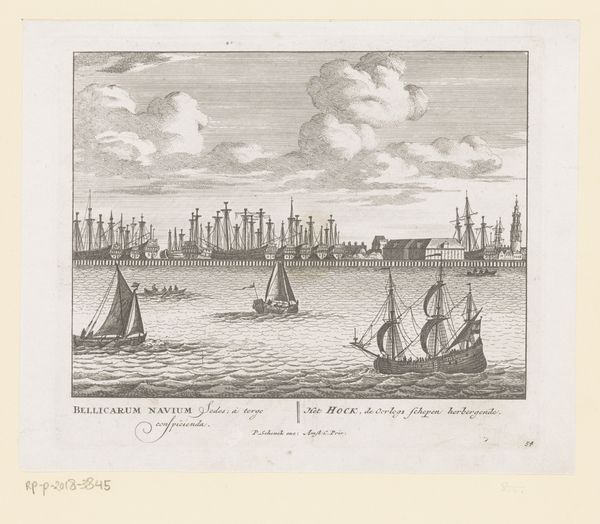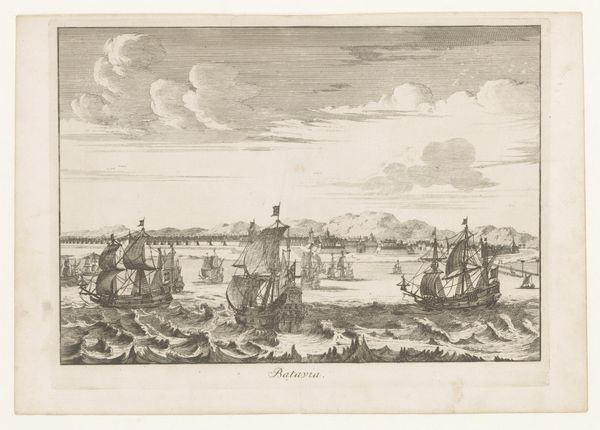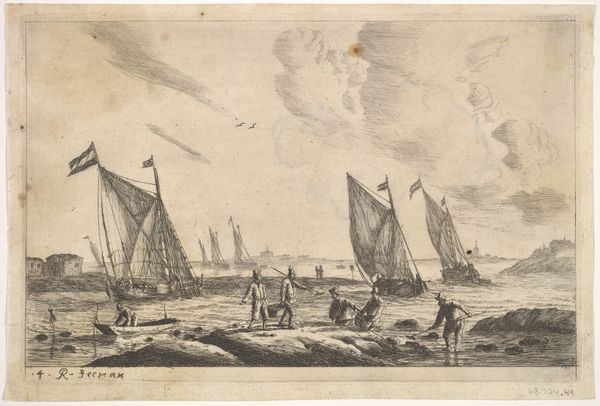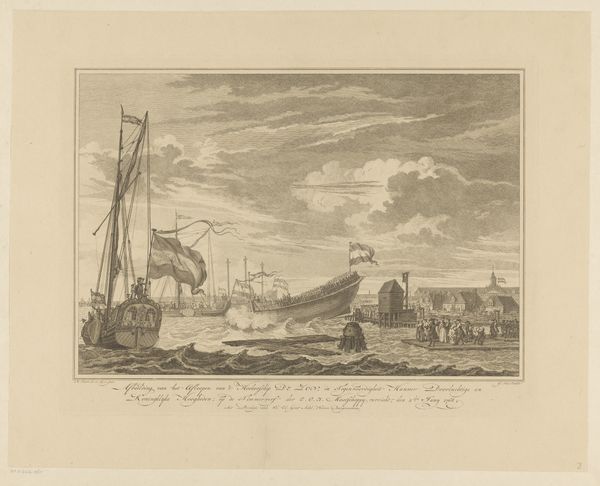
print, engraving
#
baroque
#
dutch-golden-age
# print
#
landscape
#
cityscape
#
genre-painting
#
engraving
Dimensions: height 171 mm, width 283 mm
Copyright: Rijks Museum: Open Domain
Curator: Here we have “Zoutwinning in Zeeland, ca. 1600,” or "Salt Extraction in Zeeland," a print by Jan Caspar Philips created after 1750. The scene presents figures busily working in a coastal landscape. What catches your eye? Editor: It's remarkably…muted. Even though there’s so much activity depicted, a bustling harbor scene with workers, boats, and buildings receding into the distance, it’s all rendered in such a delicate, almost subdued palette. It conveys a feeling of labor, but also of the quiet, everyday reality of it. Curator: Philips created this well after the activity itself, and that temporal distance undoubtedly influences its romanticized perspective. We should ask, how did this industry shape the social structures and hierarchies of Zeeland? Salt was incredibly valuable, a necessity for preserving food. Who benefited, and who toiled under harsh conditions? The engraving doesn’t show the back-breaking labour as vividly as it does the picturesque charm. Editor: I agree, the focus is clearly on the iconography of labor rather than its stark realities. Look at the tools and techniques—the carefully orchestrated choreography of workers extracting salt. This is how a community, or this area extracts meaning or value from the natural elements available. Water to extract the mineral of salt. It really serves a double purpose of representing a specific locality but in a methodologically didactic process of labor and how people can manipulate and derive value. Curator: And how that extraction intersects with concepts of regional identity and power. Zeeland's wealth was linked to this industry, fueling its influence within the Dutch Republic. The print functions almost as a visual claim of ownership, emphasizing the province's productivity. Who and how is the subject created to represent its region and in this case economic prowess. Editor: The large clouds billowing above might also represent that sense of extraction, as well as the ever looming precarity of it, knowing clouds contain rain, can signal an upcoming change in conditions, from a shift in landscape conditions from water as life giver to water as potentially disastrous for crops. They underscore that ever important need for natural extraction to bolster the state or region. Curator: An excellent point! Perhaps we can then consider those billowing forms, even given its delicate monochromatic rendering, a warning. They serve as potent reminder of the socio-political weight that clouds are known to have: from a force of nature, that dictates change through weather. Editor: So, a peaceful scene initially, but layered with signs and anxieties of the extraction of natural elements! Curator: Exactly. It's a reminder that even seemingly bucolic landscapes are steeped in complex stories of labor, power, and resilience.
Comments
No comments
Be the first to comment and join the conversation on the ultimate creative platform.
